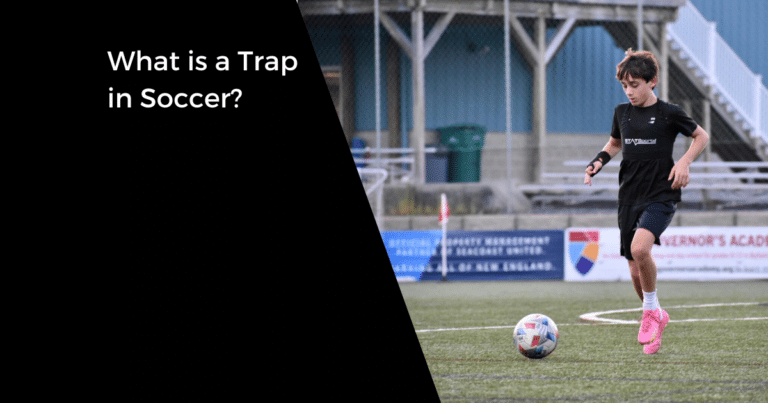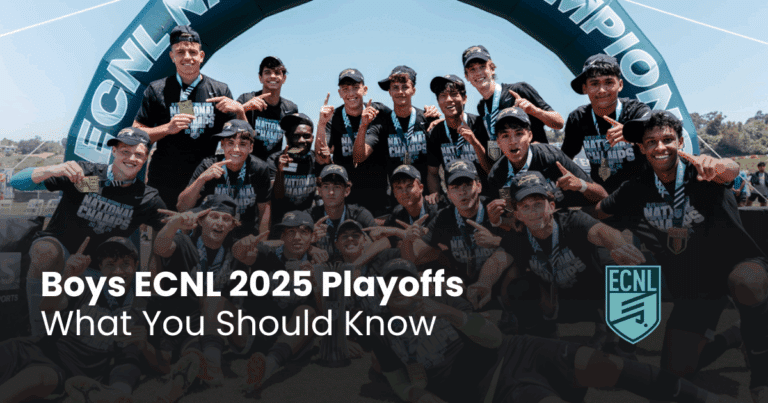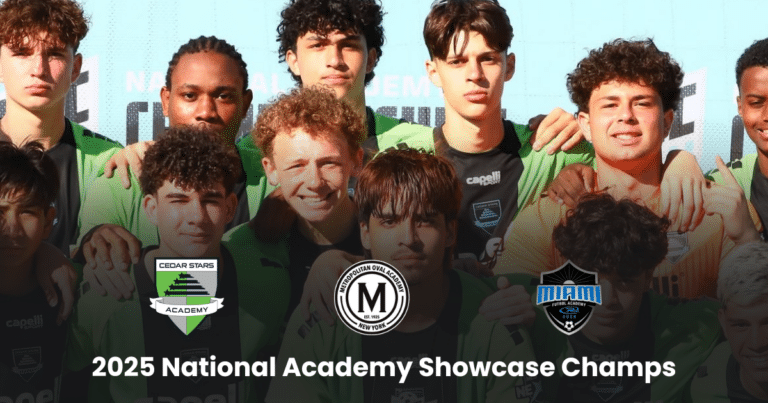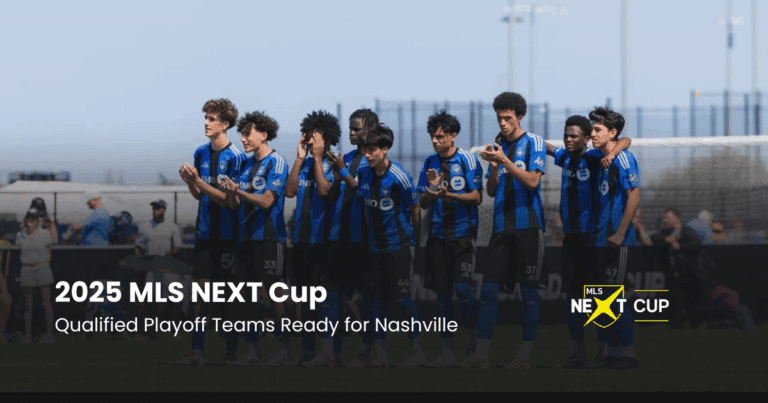Too Many Players & Parents Focused on “The Badge”
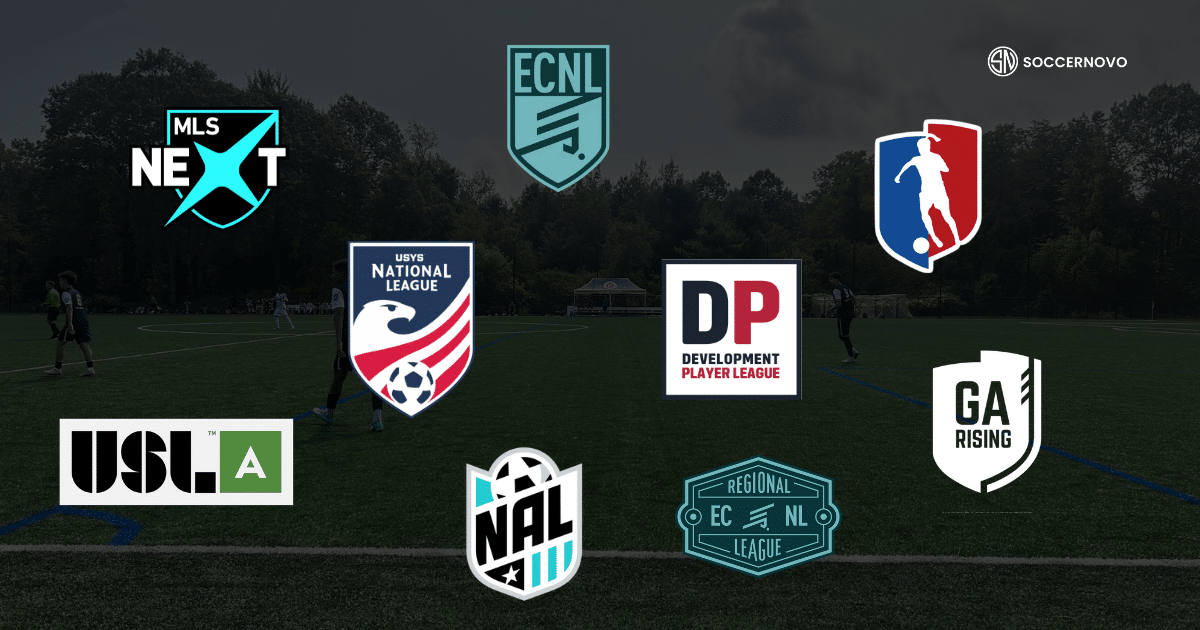
Sideline convos at a weekend tournament. Parents cluster in folding chairs, coffee in hand, casually dropping league names like currency. “Oh, your daughter plays ECNL? That’s great. My son just made MLS NEXT.” Another chimes in about GA. Someone else mentions their kid’s USL Academy pathway. The logos on the jerseys become conversation starters, resume builders, social media bios.
But here’s the question that should matter more: Does the badge make the player — or does the player make the badge?
There’s no denying these leagues represent legitimate competitive platforms in the United States. MLS NEXT, ECNL, GA, and others have created pathways that connect talented players with opportunities. They deserve recognition for raising standards and creating structure in American youth soccer.
But somewhere along the way, they’ve become more than development platforms—they’ve become status symbols. And that shift has created a dangerous distortion in how we measure soccer success.
This isn’t an attack on these top leagues. It’s a wake-up call about where we place our focus. Because when families chase patches instead of progress, when club logos matter more than coaching quality, and when a child’s jersey carries more weight than their actual development—we’ve lost the real plot.
The Badge Obsession
Walk through any youth soccer complex in America and you’ll feel it: the gravitational pull of the prestigious league name. Parents use it as shorthand for validation. “She plays ECNL” becomes the answer that ends all questions, the proof that their investment—financial and emotional—is paying off. The league name on the jersey does the talking.
Players absorb this messaging early. Instead of saying “I want to improve my weak foot” or “I’m working on my first touch,” they set goals around labels: “I want to make MLS NEXT.” “I want to play GA.” The aspiration shifts from skill development to status acquisition. The dream becomes about the logo you wear, not the player you’re becoming.
Social media (we are guilty of this too) amplifies this dramatically. Scroll through youth soccer posts and count how many focus on team announcements, league affiliations, and club commitments versus actual player development. The announcement graphic with the club crest gets more attention than the training session that built the skill. Parents post the jersey reveal, the league logo, the “committed to” graphic. What gets lost? The unglamorous daily work that actually creates growth.
Clubs understand this psychology and market accordingly. “Elite pathway to professional soccer.” “Direct pipeline to college recruitment.” “MLS NEXT affiliate program.”
The messaging promises outcomes, dangles dreams, and positions the league affiliation as the key that unlocks everything. And it works.
Families pay premium fees, endure grueling travel schedules, and restructure their lives around these programs—often before honestly assessing whether the environment actually serves their child’s development.
What Really Matters in Development
Strip away the marketing and look at what actually grows soccer players. It’s not complicated, but it requires looking past the surface.
The environment shapes everything. Not the league name on the schedule—the daily training environment. Is the coaching staff technically proficient and genuinely invested in teaching? Does the training intensity push players appropriately without crushing them? Is the culture built on growth mindset principles, or is it driven by fear and results-only thinking? These factors determine development far more than which league logo appears on the website.
Playing time and individual attention matter immensely, especially in the critical development years between 10 and 16. A player getting 60-70 minutes per game in a strong local league, receiving detailed coaching feedback and skill-specific training, will typically develop faster than a player sitting the bench 50% of games in a “higher” league. Touches on the ball, decisions under pressure, mistakes made and corrected—this is the currency of development, and you can’t earn it from the sideline regardless of how prestigious the competition.
Development happens through repetition, failure, and confidence building. Players need thousands of touches. They need to try things that don’t work, process feedback, and try again.
They need to experience success that builds belief in their abilities. They need coaches who see their potential and invest in unlocking it. None of this requires a specific league affiliation. All of it requires intentional, player-centered coaching and appropriate competitive challenge.
Here’s the truth that makes some people uncomfortable: you can grow anywhere with the right focus and attitude. A hungry player with excellent coaching in a strong regional league can develop just as well—sometimes better—than a player in a recognized league with mediocre coaching and limited playing time. The badge doesn’t teach. The badge doesn’t give feedback. The badge doesn’t build confidence or refine technique. Coaches do that. Environments do that. The player’s own commitment does that.
How the System Fuels the Problem
To understand why badge-chasing has become so pervasive, you need to understand the American youth soccer landscape. Unlike many countries with unified development systems, U.S. youth soccer is intentionally fragmented.
Multiple organizations claim “elite” status. MLS NEXT Homegrown, MLS NEXT Academy, NAL, ECNL, GA, NPL, USL Academy—each operates independently, each markets itself as a premier pathway, each competes for the best players and clubs.
This fragmentation creates confusion, and confusion creates opportunity for marketing. Clubs leverage league affiliation as their primary recruiting tool. “We’re an MLS NEXT club” becomes the headline on the website, the opening line in the sales pitch, the answer to why parents should choose them over the competition down the road. League status justifies premium pricing. It signals legitimacy. It attracts ambitious families.
Parents, understandably, buy into this messaging. Without a clear, unified system to guide decisions, they look for signals of quality. League affiliation provides an easy heuristic: if it’s MLS NEXT, it must be the best. If it’s ECNL, we’re on the right track. The league name becomes a proxy for due diligence. Why research the coaching staff’s credentials, training methodology, or player development track record when the league logo seems to answer those questions?
This creates a self-reinforcing cycle. Clubs market league status. Parents select clubs based on league status. Players define success by league status. And everyone gradually loses sight of what actually matters: is this player improving?
The system also pushes players into these leagues prematurely. A talented 11-year-old gets recruited to an MLS NEXT team. Sounds great—until that player spends the next two years getting limited minutes against competition they’re not ready for, losing confidence, and missing the developmental reps they desperately need.
Meanwhile, another 11-year-old stays in a strong local club, plays regularly, builds skills and confidence, and enters the elite league pathway at 14 actually ready to benefit from it.
Timing matters. Readiness matters. But when the badge becomes the goal, these nuances get ignored in the rush to arrive.
The Downside of Chasing the Badge
The consequences of badge-obsession are real and increasingly common across American youth soccer.
Burnout hits hard when the dream team doesn’t deliver on its implicit promises. Families invest enormous time, money, and emotional energy into securing a spot on the “elite” team, only to discover that the environment is toxic, the coaching is mediocre, or their child simply isn’t developing as expected.
The cognitive dissonance is painful: we made it to the top league, so why isn’t everything working out? The badge was supposed to solve everything. When it doesn’t, disillusionment follows.
Playing time disparities become glaring. A player who thrived in a regional league, getting 80 minutes per game and touching the ball constantly, moves to an ECNL or MLS NEXT team and suddenly sits the bench 40% of games. They’re training with better players, yes, but they’re not playing. And in youth soccer, especially before age 16, playing is developing.
That player might have been better served staying in their previous environment for another year or two, building skills and confidence before making the jump. But the badge beckoned, and now they’re stagnating on a “better” team.
Joy drains from the game when soccer becomes a status chase rather than a passion. Players stop playing for the love of it and start playing to maintain their position on the right team, to justify their parents’ investment, to keep up with peers who “made it” to elite leagues. The intrinsic motivation that makes great players—the pure enjoyment of the game—gets crowded out by extrinsic pressures. Soccer becomes work, obligation, identity validation. The fun disappears.
And here’s the overlooked reality that should change every family’s perspective: scouts and college coaches don’t just look at team logos. They look for growth trajectory, technical ability, soccer IQ, athleticism, and character.
They want to see where a player is now and project where they’ll be in two to four years. A player who moved from NPL to MLS NEXT, showing clear development and increased responsibility, tells a compelling story. A player who’s been in ECNL since age 12 but hasn’t progressed beyond their early promise? That raises questions.
College coaches recruit players, not patches. Professional scouts sign talent, not team affiliations. The badge might get you looked at initially, but it’s your actual ability and growth trajectory that earns opportunities.
How to Shift the Focus Back to Development
The fix requires intentional mindset shifts from both parents and players. It means resisting cultural pressure and trusting a longer developmental timeline.
For Parents:
Change the question you ask yourself. Instead of “What league is my child playing in?” ask “Is my child improving and enjoying soccer?” The second question is harder to answer—it requires observation, honest assessment, and patience. But it’s the only question that actually matters.
Choose coaches who care about teaching, not just winning. Watch training sessions before you commit. How much individual feedback does each player receive? Is the coaching style encouraging or demeaning? Does the coach adjust their approach for different learners? Are players being taught decision-making skills or just drilled on patterns? Quality coaching transcends league affiliation.
Stop comparing your child’s path to someone else’s. Your neighbor’s kid making MLS NEXT at 12 has nothing to do with your child’s development. Soccer timelines vary enormously. Some players develop early. Others mature later. Some need more time in supportive environments before handling elite competition. Comparison steals joy and distorts perspective.
Celebrate progress, not prestige. When your child masters a new skill, makes a smart decision under pressure, or shows improved confidence—that’s worth celebrating. When they move up a league level? That’s fine, but it’s not the victory. The growth is the victory. The badge is just a badge.
For Players:
Focus on getting better every season. Set specific skill development goals. Work on your weak foot. Improve your fitness. Develop your soccer IQ. Learn new positions. Become more consistent. These are the measurements that matter, and you control them completely regardless of what league you’re in.
Be coachable, work harder, and stay consistent. The players who maximize their potential aren’t always the most talented—they’re the ones who show up, listen, work, and persist. They take coaching feedback seriously. They put in extra work. They maintain their effort through ups and downs. This approach works in any league at any level.
Don’t let status define your confidence. Your worth as a player isn’t determined by the logo on your jersey. It’s determined by your ability, your attitude, and your trajectory. Some of the best players in the world came from “nowhere.” What made them special wasn’t their youth team affiliation—it was their relentless focus on improvement.
Remember: talent is built, not branded. Every professional player you admire spent years building their ability through daily training, competitive games, and personal commitment. Very few of them wore prestigious badges throughout their entire youth career. What they had was dedication to craft. That’s what you need too.
Real, Real Perspective
Development pathways in soccer are rarely linear, and the best paths often include strategic moves between leagues and levels as players grow and circumstances change.
Players regularly move from NPL to MLS NEXT or from ECNL-RL to ECNL as they develop. These transitions are normal and healthy—they reflect growth, increased ability, and readiness for greater challenges. A player who spends ages 11-13 in a strong local league, develops fundamental skills, then moves to an elite league at 14 ready to compete is following a smart developmental arc. They didn’t start at the “top”—they built their way there.
Look at professional soccer globally and you’ll find countless examples of top players who came from modest youth environments. Many current MLS, European, and international stars didn’t play for prestigious youth clubs. They played for local teams, community clubs, or secondary academies before their talent became undeniable and they moved to bigger platforms. What distinguished them wasn’t their early team affiliation—it was their ability and drive.
Christian Pulisic played local Pennsylvania soccer before joining PA Classics, then moved to Brackley Town in England at 7, and eventually to Borussia Dortmund’s academy at 16. Weston McKennie came through FC Dallas youth system but wasn’t in their academy until later in his development. Ricardo Pepi played for local Dallas clubs before joining FC Dallas academy. The pattern repeats: strong local foundation, clear development, then movement to elite platforms when ready.
The takeaway isn’t that elite leagues don’t matter—it’s that they’re not the only path, and they’re not always the right path at every stage. True development is recognized anywhere. Good players always find their way. Scouts attend games at many levels. College coaches recruit from diverse leagues. Professional academies identify talent wherever it emerges.
Your job isn’t to chase the badge—it’s to develop the ability that makes the badge pursue you.
It’s About the Player, Not the Patch or the Pitch
The badge on the jersey will fade. The team photo will yellow. The league affiliation will change. But the player’s growth—the technical skill, tactical understanding, mental toughness, and love for the game—that remains.
Youth soccer should span a fluid 5-10 year development journey, not a sprint to the most prestigious league by age 12. Over that decade, players should move through environments that challenge them appropriately, provide excellent coaching, allow sufficient playing time, and nurture their passion for soccer. Sometimes that means elite leagues. Sometimes it means strong local clubs. Sometimes it means strategic moves between levels as readiness evolves.
What it should never mean is sacrificing development for status, or mistaking a logo for progress.
The American youth soccer landscape makes badge-chasing easy. Multiple organizations compete for credibility. Clubs market league affiliation aggressively. Social media amplifies status signaling. The pressure to “make it” to elite platforms creates urgency that overrides developmental wisdom.
Resist that pressure. Look past the marketing hype. Ask better questions about coaching quality, training environment, playing time, and your child’s actual improvement. Celebrate growth over prestige. Trust the process over the patch.
The badge fades. The player’s growth doesn’t!
That’s what matters. That’s what lasts. That’s what scouts see, coaches value, and truly elite programs recognize. Build the player, and the opportunities will follow—with or without the patch.

Written By: SoccerNovo
SoccerNovo is an independent youth soccer media brand built to help parents, players, and coaches better understand the game and the pathways available in U.S. soccer. Our mission is to make youth soccer simpler, clearer, and more accessible for everyone involved in it.
Let’s connect


